Evil Dead’s History And Legacy: 1983's The Evil Dead Is Gory, Glorious Genius Born Out Of A Nightmare Production
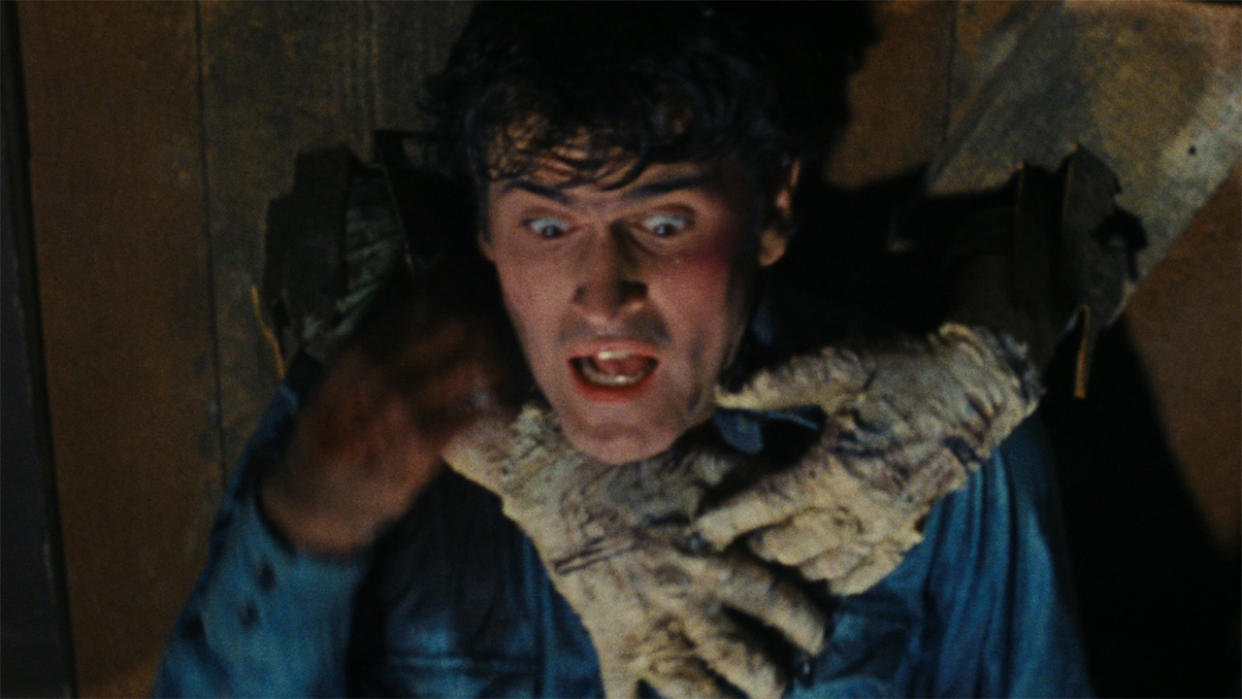
In the late 1970s, 20-somethings Sam Raimi, Bruce Campbell, and Rob Tapert decided that they were ready to make their first feature. Raimi and Campbell were childhood friends, and Raimi and Tapert met while simultaneously attending Michigan State University, and they were all unified in aspirations as filmmakers. Having experience making shorts on Super 8mm film, they decided their best course of action to make something economical and marketable was to make a horror movie, and it was while studying the Egyptian Book of the Dead in an ancient history class at MSU that Raimi found inspiration for the story. All three men would be producers, with Raimi also writing and directing and Campbell starring.
Sam Raimi went about writing the screenplay (originally titled Book Of The Dead) as a credited independent study project, and a proof of concept short film titled Within The Woods was shot to be shown to potential investors… but it was an uphill climb to raise money, which would be indicative of how the rest of the production would proceed. As discussed by Raimi, Bruce Campbell and Rob Tapert on the 30th anniversary Blu-ray commentary track, the mission was to raise a $150,000 budget exchanging a $10,000 investment for a two percent stake, and while getting a number of rejections, they were able to raise $85,000 from a number of different sources – including a man who Raimi met at K-Mart while getting film developed.
With aid from the small film commission in Tennessee, the small production team of Book Of The Dead – including number of friends serving as the crew and actors Ellen Sandweiss, Richard DeManincor, Betsy Baker and Theresa Tilly – traveled down from the Detroit area in Michigan to Morristown, Tennessee. They immediately faced issues as the original location where they were going to shoot fell through, forcing a change in the production schedule, and eventually what was planned as a six week stay in the freezing woods turned into 12 weeks.
The cabin, which had to be emptied of manure prior to filming, provided no legitimate shelter from the cold because of its barebones construction; power tools were stolen, necessitating someone be at the set at all times; injuries were rampant among the cast and crew, with the white lenses worn by the actors in makeup causing extreme discomfort; and exhaustion was so extreme that people would fall asleep at the camera. It was an objectively miserable experience for all involved, with the hope of actually finishing the film keeping people going.
Even when the movie was finished, it still took years to find a distributor – but then the feature got the support of septuagenarian Hollywood veteran Irvin Shapiro (who was responsible for the title change to The Evil Dead). While Sam Raimi, Bruce Campbell, and Rob Tapert were focusing on domestic distribution and getting a lot of negative responses and bad offers, Shapiro made a deal with Palace Pictures in England, which proceeded to release the film in theaters and into the burgeoning home video market simultaneously. It instantly found a cult audience (while also generating controversy), and this led to a deal being forged with New Line Cinema for a theatrical release in the United States in 1983.
Between the big screen and tremendous success on VHS, The Evil Dead quickly made an indelible mark on the horror world – in part because of the impression it made on some of the popular names in the genre. Prior to its distribution, the movie got a key stamp of approval from Stephen King, who had developed an instant reputation in the horror community in the era. The author saw the film at the 1982 Cannes Film Festival and wrote an article about it for Twilight Zone Magazine. Found via Reddit, King writes in the piece,
That [Sam Raimi] is a genius is yet unproven; that he has made the most ferociously original horror film of 1982 seems to me beyond doubt.
The journey making The Evil Dead was wild, but the impression that it has made on pop culture is even more remarkable – with it having an immeasurable influence on genre filmmaking, its fanbase growing ever larger, and the film ultimately spawning multiple sequels and a television series. The latest chapter, Evil Dead Rise, will be in theaters in just a few short weeks, and we’re counting down to that release with an in-depth look at Evil Dead’s History and Legacy.
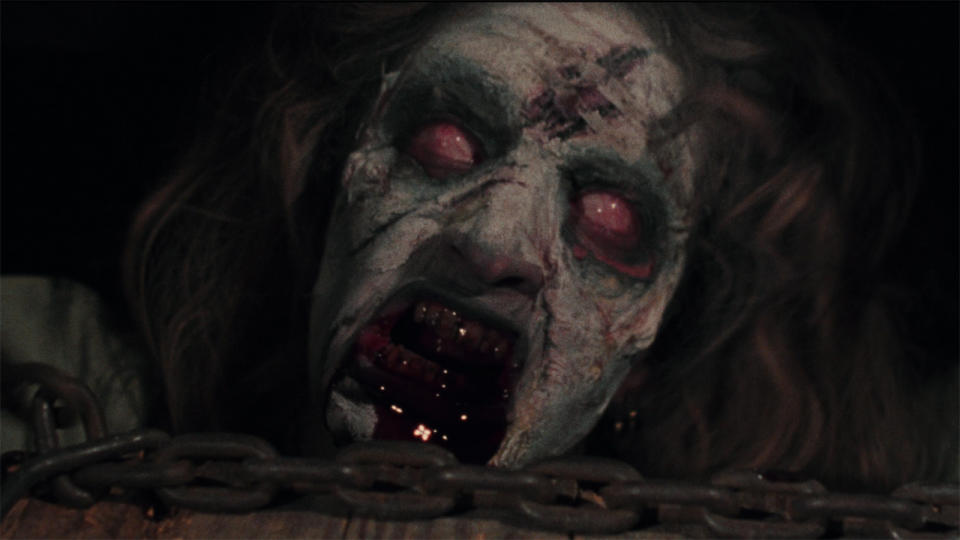
Why The Evil Dead Is The Second Best Movie The Evil Franchise
The Evil Dead was not the first horror movie to have a group of young people go out into the woods and experience extreme terror, and it’s far from the last – but it’s a special film in its style and relentlessness. It’s not a roller coaster in that it’s not about peaks and valleys; it’s more akin to the world’s tallest waterslide being equipped with an express elevator and a river of blood instead of H2O. After limited setup, the bulk of the 85-minute runtime is chaos, and it’s executed with such brilliant in-your-face panache that its scares are as fun as they are nightmare-inducing.
It’s complicated to compare The Evil Dead to any of its sequels given that one of the hallmarks of the franchise is the fact that each installment operates with a different energy than its predecessor, but it will always deserve special consideration because of the phenomenal ingenuity on display from some incredibly young talent. Today, the Sam Raimi aesthetic is well known thanks to the superhero blockbusters he’s made in addition to his horror hits and thrillers, and Bruce Campbell’s specific charm and charisma is beloved among cinephiles, and it’s a remarkable thing to see how their gifts are on display in their very first feature.
In a 2013 interview, Campbell told me bluntly, “Evil Dead movies are not fun at all” when it comes to the process of making them, but even with that universal hardship in the franchise it’s hard not to specifically admire what the cast and filmmakers accomplished with The Evil Dead. You’d expect that a production working with inexperienced personnel and through such terrible conditions would either A) never finish the movie, or B) create something wretched and unwatchable, but instead it’s a brilliant work of art.
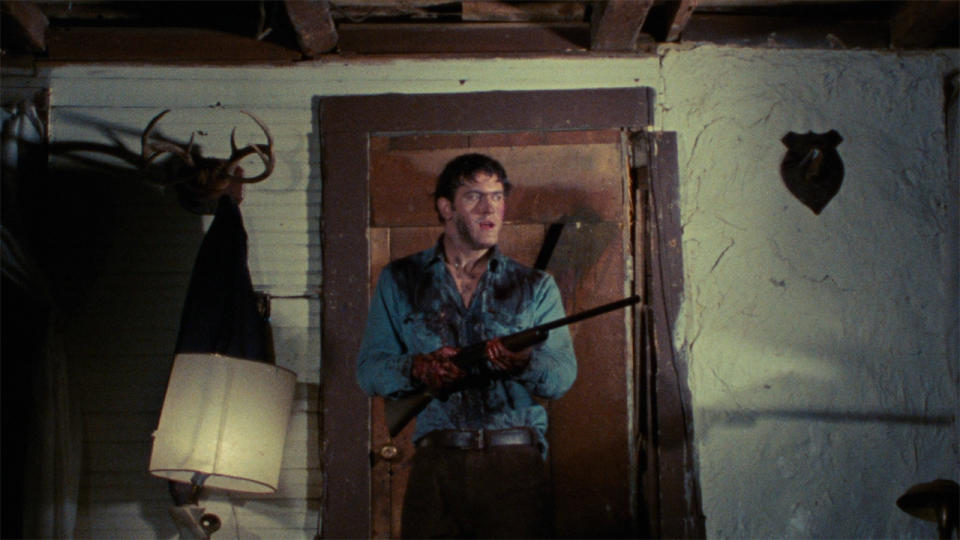
How The Evil Dead Fits Into The History Of Horror
When Sam Raimi, Bruce Campbell, and Rob Tapert agreed to make a horror movie as their first feature, a key part of the reason why was because they saw opportunity in the distribution market of the time. In the late 1970s, film festivals and film markets for independent cinema weren’t major parts of the industry like they are today, but what did exist were regional domestic distributors, grindhouse theaters, and drive-ins, and those were havens some small genre releases.
In the documentary One By One We Will Take You: The Untold Saga Of The Evil Dead, film critic Joe Bob Briggs explains,
We have kind of a golden age in the ‘70s when you can put almost anything on the drive-in screen. You had a period where the ratings board was not watching, so the ‘70s was actually a great time for all kinds of horror. There was a kind of illicit nature to these films that were released on the independent circuit where you didn’t really know where they came from. The greatest films of the ‘70s and early ‘80s are films where you watch them and there’s something unsettling about them to where you feel like, ‘Was the person who made this entirely sane?’
It was an exciting and thrilling time for horror cinema that saw the arrival of legends including John Carpenter, Wes Craven, Tobe Hooper, George A. Romero and David Cronenberg, and The Evil Dead was born in their wake.
Going into the early 1980s, home video was also becoming a significant force for the genre – but it’s also the arena where The Evil Dead was caught up in controversy, specifically in the U.K. As explained in the documentary Discovering Evil Dead: The Palace Boys Meet The Evil Dead, ratings boards had a degree of control over the content that could be shown in theaters, but the same kind of regulations didn’t exist for VHS distribution, and it led to a collection of titles dubbed “Video Nasties.” The Evil Dead ended up being the subject of prosecuted obscenity charges, and Sam Raimi actually flew to England to testify on behalf of the film, but a judge declined his testimony. Eventually all charges were dismissed.

How The Evil Dead Sets Up Its Franchise’s Canon And Future
As noted earlier, the Evil Dead franchise is an odd beast in that there is quite a lot of tone variation in the sequels, and there really isn’t a whole lot of consistency when it comes to the supernatural “rules” in the canon. That being said, there are constants – the big one being the Necronomicon: the book of dead, bound in human flesh and inked in human blood. It is the pitcher from which all evil pours in the continuity, with terror unleashed upon any person or group that is around when passages from the pages are read aloud. Ordinary people can be possessed and become beings known as Deadites, and sometimes even cutting them to pieces doesn’t kill them.
Though not quite as ubiquitous in the franchise as the Necronomicon, Bruce Campbell’s Ashley “Ash” Williams also gets his formal introduction to pop culture in The Evil Dead. He doesn’t take on his most iconic form until Evil Dead II (next week’s column!), but all of the groundwork for the character is lain, and during an age when the groundwork for the “final girl” trope was being founded, he is a rare male protagonist who is still alive when the credits roll. Director Fede Alvarez’s Evil Dead from 2013 was the first sequel to not include Ash as the lead, but he made his triumphant return a couple years later in Starz’s Ash vs. Evil Dead series.
2013’s Evil Dead was also the first in the canon not to be directed by Sam Raimi, but key signatures of his style are nonetheless present, and that all traces back to The Evil Dead. The first person perspective shots of “evil” lurking through the woods and chasing characters is a genius cinematic touch that has been aped by filmmakers in hundreds if not thousands of titles, and nobody punches in on an actor’s face in the same way. And, of course, there is the copious amounts of unflinching gore that is so over-the-top that it becomes hilarious with enough viewings.
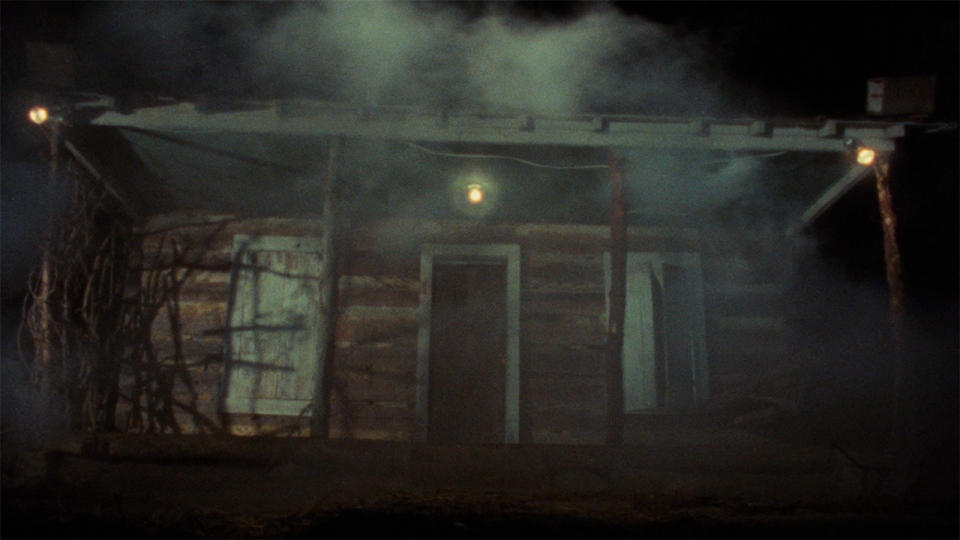
Is The Evil Dead A Good Horror Movie In General?
The legacy of The Evil Dead is fortified by the fantastic sequels that have been released in the last four decades, but even if they were never made, it would still exist as a landmark title in horror history. It’s unquestionably excessive, gratuitous, and disgusting, but those qualities are generated from remarkable craft and skill – from monstrous make-up, to cinematography-generated surprises, to monstrous stop motion. The effects do age it, but it’s a phenomenal product of its time, and even after hundreds of viewings it’s hard to fully fathom how Sam Raimi and his collaborators managed to pull off what they did with the resources they had.
More than just being a spectacular piece of 20th century art and an icon of the horror genre, The Evil Dead is an inspirational part of pop culture. The experience making the movie took a toll on everyone involved, but the remarkable passion they all possessed to create it is legendary, and its story is a standout precursor to the indie movement that changed Hollywood during the 1980s and 1990s.
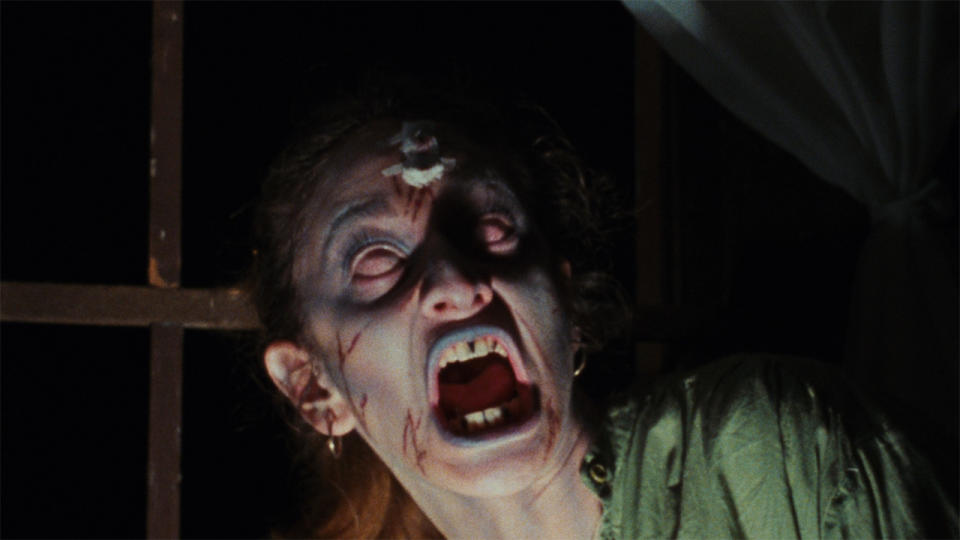
How To Watch The Evil Dead
At present, The Evil Dead is not available on any subscription streaming service, but it is easy to find and watch nonetheless. As far as digital options are concerned, the film can be rented or purchased from Amazon Prime Video or Vudu. If you’re a fan of the Evil Dead franchise who is also a physical media collector, you may be like me and have purchased the movie in many different formats over the years, but the best version currently available is the 4K UHD release.
Be sure to come back to CinemaBlend next Thursday for the second installment of Evil Dead’s History and Legacy, as I’ll be doing a deep dive into the remarkable film that is Evil Dead II. In the meantime, you can read my previous Horror History and Legacy column series focused on the Scream franchise.
